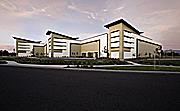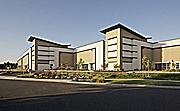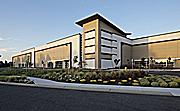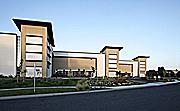Technology Way Warehouse
This 104,307-square-foot speculative warehouse project was a natural fit for the tilt-up method of construction because the tilt-up method represents the best convergence of several key advantages when compared to alternate methods of construction, advantages that include; cost efficiency, durability, interior planning flexibility and structural efficiency. These advantages were realized on this project in the following ways:
Cost efficiency: The reduced labor requirement combined with a project construction duration of less than 10 months resulted in a construction cost that would be impossible to match with any other building method.
Durability: Due to concrete's inherent strength and durability (and ease of maintenance), it is hard to imagine a building type that can "outlive" a tilt-up. The project expects a total useful life span of not less than 80 years.
Interior planning flexibility: The ability of the tilted walls to carry the roof loads in the long axis of the building resulted in fewer interior columns compared to other construction methods. Further, by eliminating all recesses at the entry storefront windows and doors, the project allows every interior square foot of area to be utilized by the building's tenants, further enhancing the efficiency and flexibility of the project.
Structural efficiency: The inherent structural properties of steel-reinforced concrete exterior walls allowed the design team to capitalize on the ability of the tilt-up walls to resist both vertical and horizontal loads without the need for additional interior bracing frame elements.
For these reasons, there was little time spent considering alternate methods of construction. The client and project team all had a keen understanding of the benefits of the tilt-up system.
The discussion next turned to design: "How can design, unto itself, result in a better built product?" The team explored several design approaches and considered how best to address the local CC&R's prescriptive requirement for "significant sloped roof elements". To address this requirement, the building celebrates the three primary building corners with standing-seam butterfly roofs atop three corner towers that reach a height of 46-feet. Narrow glazing "strips" that span vertically to a height of 35-feet are strategically placed at the edge of each tower to create additional visual punctuation of the building's front facade. The design also explores the use of concrete reveals not merely as "lines on the wall" but as a method to create a textural treatment by stacking the horizontal reveals vertically at 12-foot intervals. Alternating paint colors, foam banding, steel canopies and parapet height variations further articulate the facade. Together, these elements combine to create a vocabulary of parts and treatments that effectively dissolve the overall mass of the building, resulting in a refined and sophisticated aesthetic that is as squarely modern in style as it is in function.
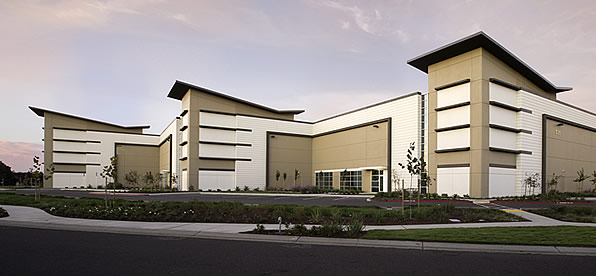
Project Location
Napa, CA 94558
United States
TILT-UP ACHIEVEMENT AWARD
The Tilt-Up Achievement Awards were established to honor projects that use site-cast tilt-up concrete to introduce new building types, advance industry technology and provide unique solutions to building programs. Winning entries illustrate the variety, beauty, and flexibility of tilt-up construction.
ACHIEVEMENT
2015
The world’s greatest tilt-up structures are featured by the TCA as Tilt-Up Achievement Award Winners. Learn more >
Project Images
Project Team (TCA Members)
- General Contractor:
- Concrete Contractor:
- Architect:
- RMW architecture & interiors
- Engineer:
- Dayton Superior Corporation
- Suppliers:
- Dayton Superior Corporation
- Nox-Crete Products Group
- HD Supply Construction & Industrial White Cap
- Photographer(s):
Project Specifics
- Project Category:
- Distribution
- Building Types:
- Finishes:
- Features:
- Insulation:
- Environmental:
- Number of Floors:
- 0
- Tilt-Up Wall Area:
- 62,622 sq ft (5,818 sq m)
- Total Floor Area:
- 103,410 sq ft (9,607 sq m)
- Project Footprint:
- 103,410 sq ft (9,607 sq m)
- Tallest Panel:
- 45 ft 3 in (13.81 m)
- Widest Panel:
- 32 ft 3 in (9.85 m)
- Largest Panel:
- 1,050 sq ft (97.5 sq m)
- Heaviest Panel:
- 130,579 lbs (59,230 kg)
